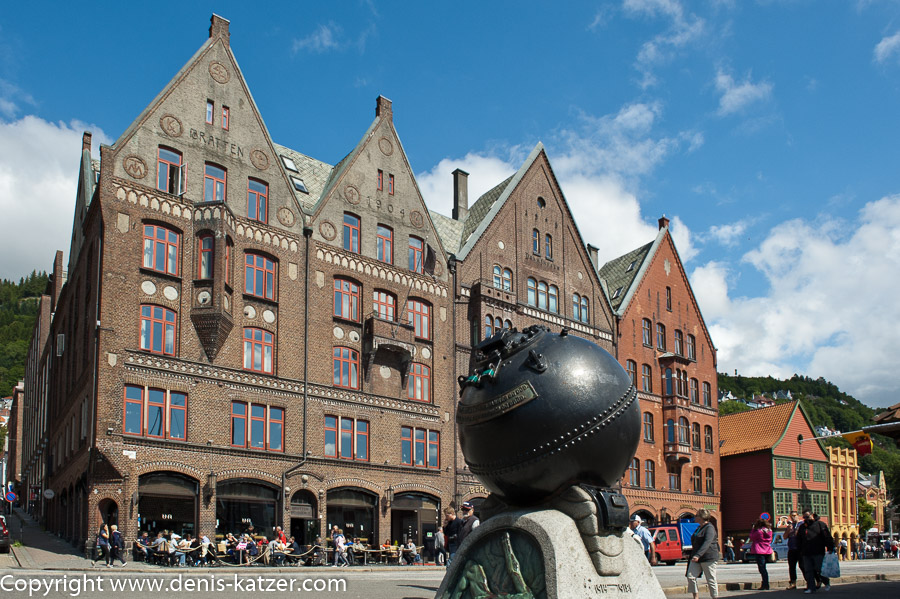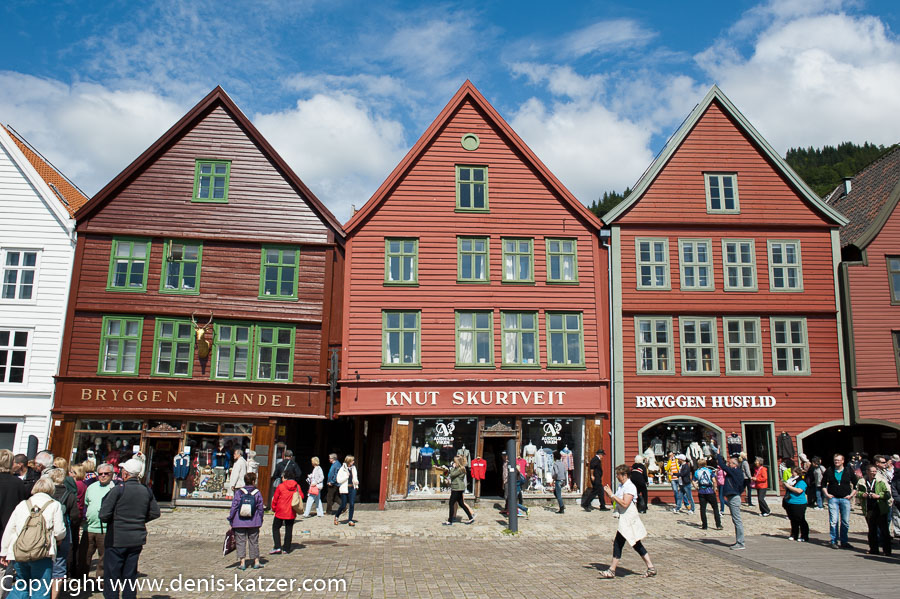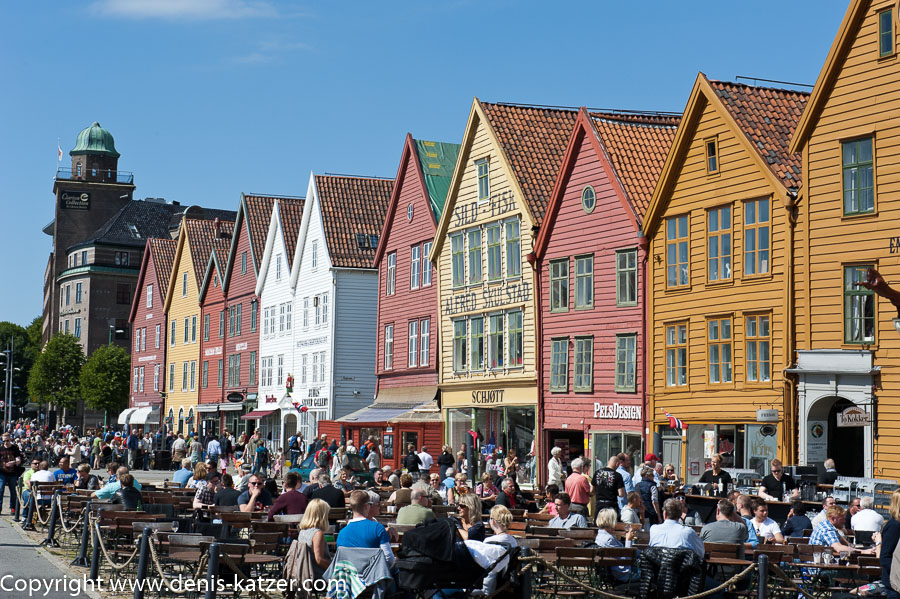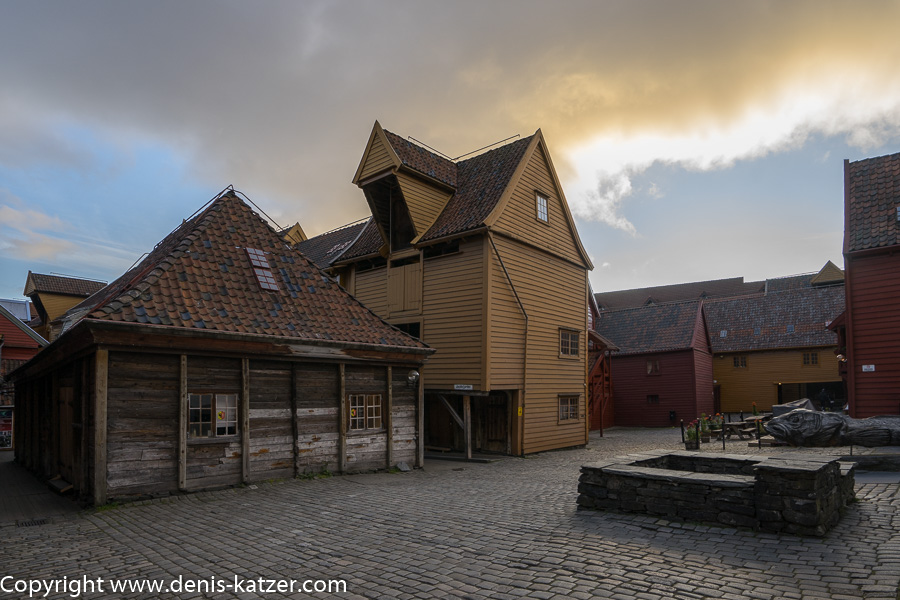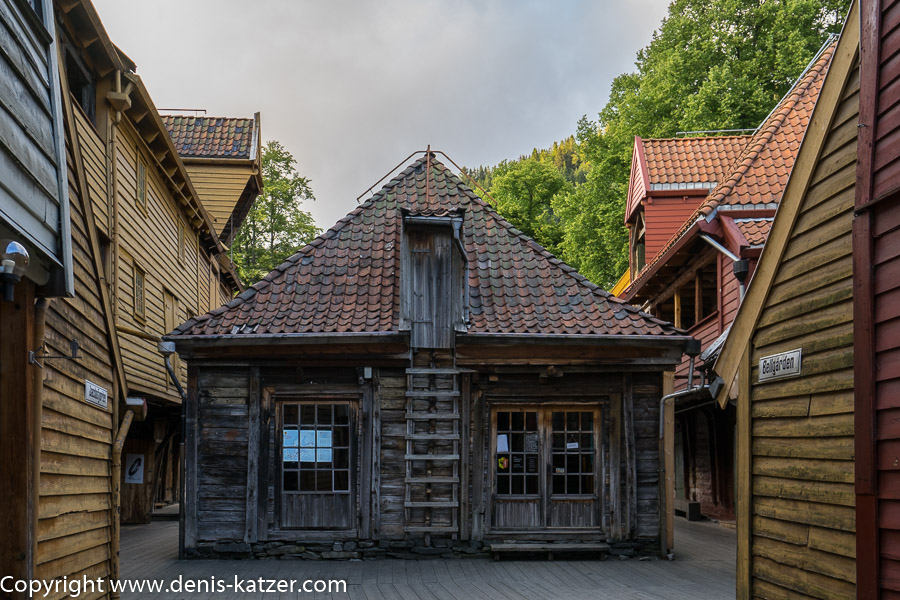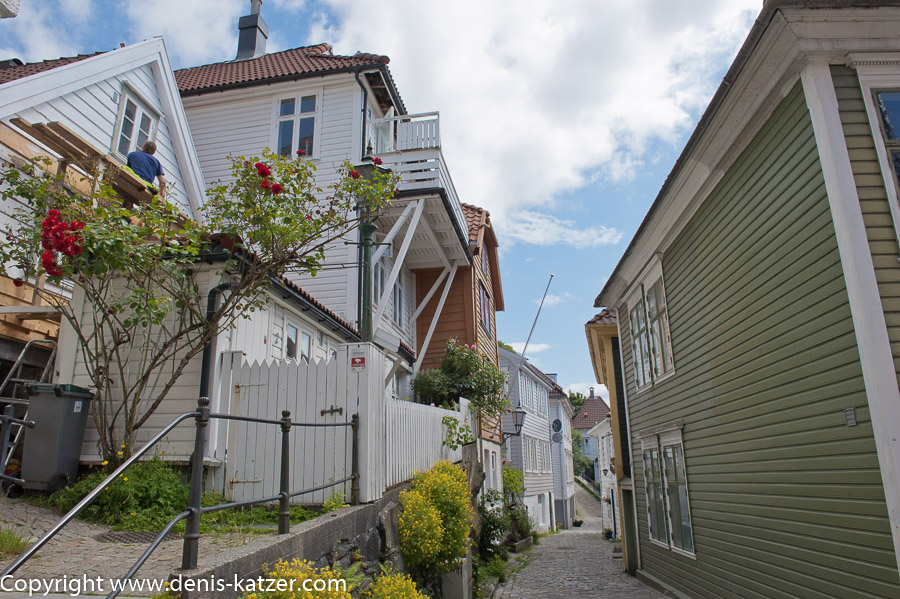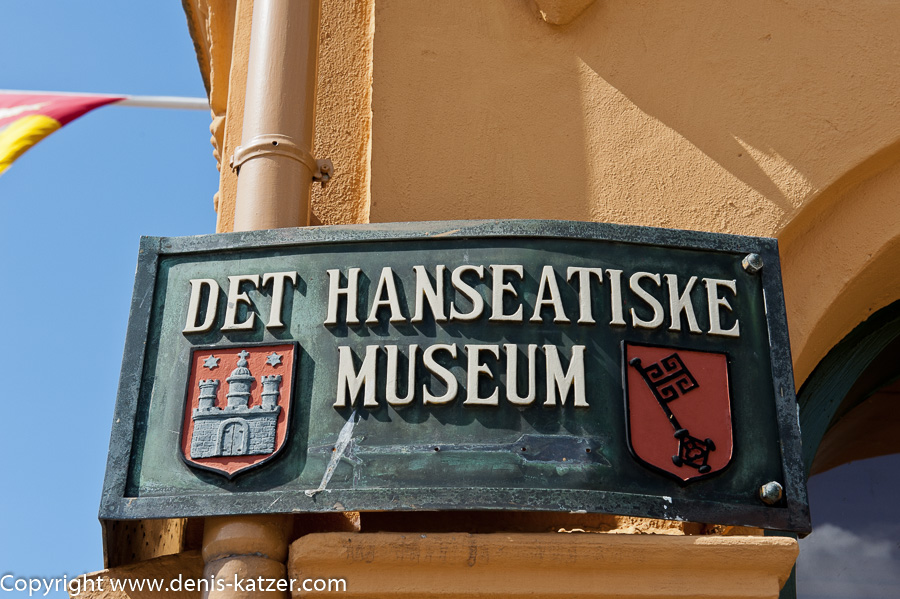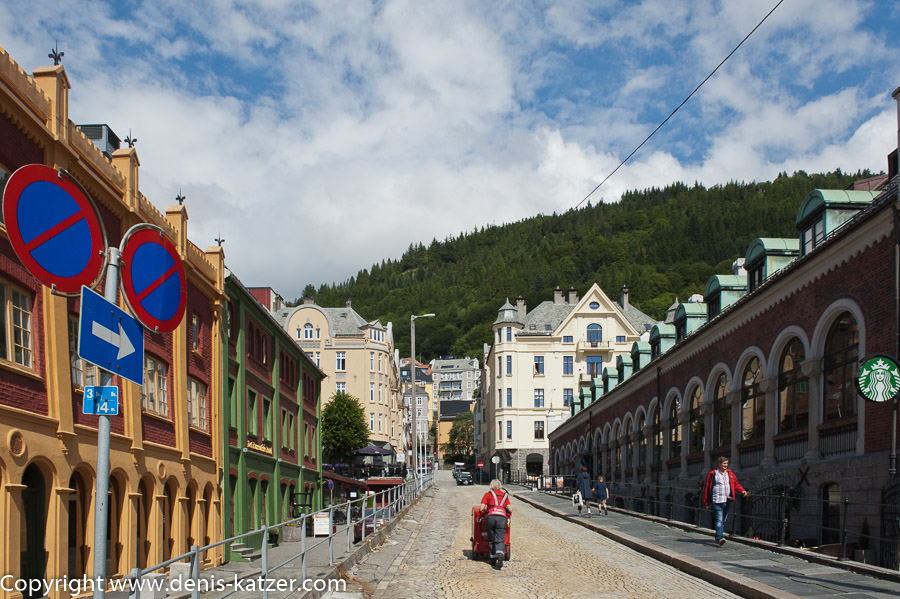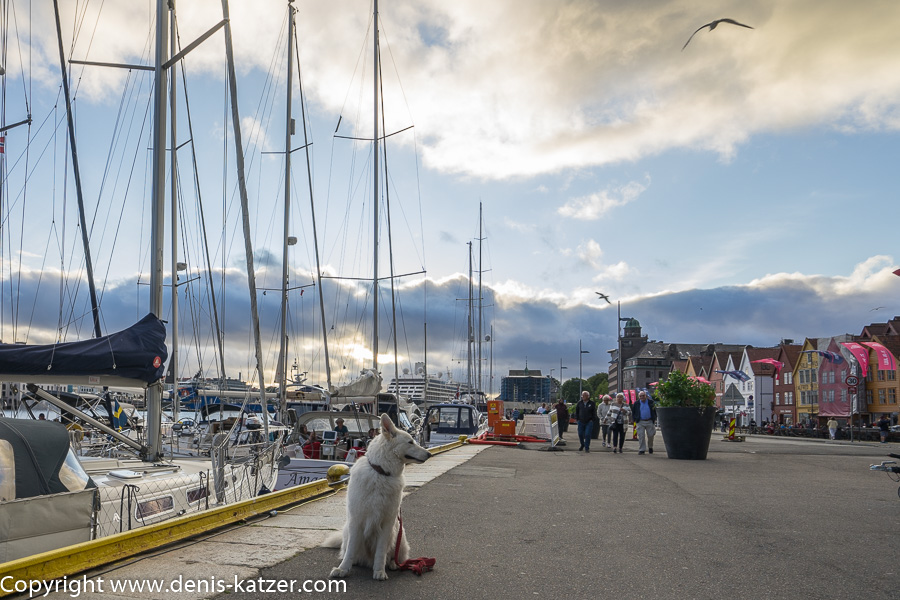
Urban fires and leprosy
N 60°23'55.0'' E 005°19'12.7''
Day: 10
Country:
Norway
Location:
Bergen
Sunrise:
04:05
Sunset:
11:10 pm
Temperature day max:
20°
Temperature day min:
14°
Night temperature:
12°
(Photos of the diary entry can be found at the end of the text).
“I can’t believe this!” I curse as the data connection on my laptop cuts out after just 20 minutes. “What’s going on?” asks Tanja. “The SIM card you bought yesterday for €28 has been used up.” “What? That can’t be right?” “I think our laptop has run an extensive update and sucked away the few gigabytes you bought.” “Well, that was short and expensive fun,” says Tanja. “Yes, especially now we can’t upload regular updates of our trip to the website,” I think. “So from now on, we’ll always need a place with public Wi-Fi to get online?” “That’s right,” I reply and close my laptop again.
We use the time gained to explore the world-famous historic harbor district of Bryggen (declared a UNESCO World Heritage Site). Built as early as 1360 by Low German merchants as a trading settlement, one could be forgiven for thinking that time had stood still here. Behind the freshly painted warehouses, on the harbor promenade, we walk through narrow, lightless alleyways. As if we had stepped through the door to the past, we instantly feel as if we have been transported back centuries. “Look at the beautiful wooden houses,” Tanja says enthusiastically. “And the pretty stores and parlors everywhere,” I reply, taking my camera to my eye. Today it is hard to believe that German merchants controlled trade here for 400 years, ensured the safety of their merchant fleets, were politically active and shaped the culture. No wonder, since German merchants, sailors and craftsmen made up a quarter of Bergen’s population in its heyday. “Can’t you imagine that the wooden houses here are supposed to be 700 years old? Some of them seem as if they were only built a few years ago,” wonders Tanja. “As your personal tour guide, I can tell you that there are actually still a few cellars at the back of the neighborhood from the 15. and I grin and answer: “The houses are from the 16th century, but they’re not that old. “Let me out, what happened? I’m guessing a fire once burned down the neighborhood?” “Bingo, in 1702 a major fire raged here and destroyed almost everything. After the fire, however, Bryggen was rebuilt in the tried and tested old style. As far as I know, in 1855 and on On January 16, 1916, there were more terrible fires that repeatedly destroyed the district, which still consisted of many wooden houses,” I explain. “Strange, why has there been so many fires here?” wonders Tanja. “This was obviously due to the fact that the distances between the individual houses were very small. If a fire broke out in one house, it quickly spread to the other residential and work houses. To avoid such disasters, there were no stoves in the houses.” “So people must have been freezing terribly during the winter months,” Tanja notes. “Sure, but there were heated rooms in the rear houses, which were built of stone, by the way. At the time, they were used as courtrooms and meeting rooms. Despite all the precautionary measures, another terrible fire in 1955 destroyed the now completely run-down neighborhood, which tended to be inhabited by socially disadvantaged people. Some city fathers were pleased about this, as a new, modern urban area was to be created. Fortunately, a different decision was made and the Bryggen harbor district was rebuilt in the old style for the umpteenth time in 1965, so that the district still looks the same today as it did in the 12th century.” “I can’t believe what the people here had to endure. Now I can understand why the houses look old, but aren’t really old,” says Tanja, climbing the creaking steps to an upper floor that was once used as a workroom, dining room or bedroom. “Indeed,” I reply, panting as I climb the steep steps. “People often had to suffer enormously in the past. There was no electricity, certainly not always the best food, poor hygienic conditions and hardly any medicine, as was the case everywhere in Europe in the Middle Ages. Certainly one of the reasons why Norway still suffered massively from leprosy in the 19th century.” “What, leprosy? You’re joking, aren’t you?” Tanja is horrified. “No, no, no jokes. The oldest leprosy hospital opened here back in In the 15th century and between 1850 and 1900, Bergen was the epidemic center of Europe. There were three leprosy hospitals in the city. The world has the Norwegian doctor Gerhard Henrik Armauer Hansen to thank for the fact that leprosy is no longer a problem today. He discovered the pathogen in 1873,” I tell him. “Well, with the background knowledge, these houses and the lovely Bryggen have a completely different aura.” “Absolutely, if you just feel your way into this energy, you can really hear the voices, the crackling of the ravenous flames, the screams, but also the pulsation of life. A place of history that has an incredible amount to tell, where 61 houses are still listed today, where museums have preserved the past for posterity, a place that is now one of the most famous medieval districts in Norway and has once again become a bustling, lively part of the city of Bergen. I’d love to wander around here for a while, but if we want to get up to the trolls, we’d better hurry now.” “The trolls above the city? Yes, I’d like to do that hike before we continue our journey,” says Tanja, and we leave Bryggen behind us and make our way into the mountains…

